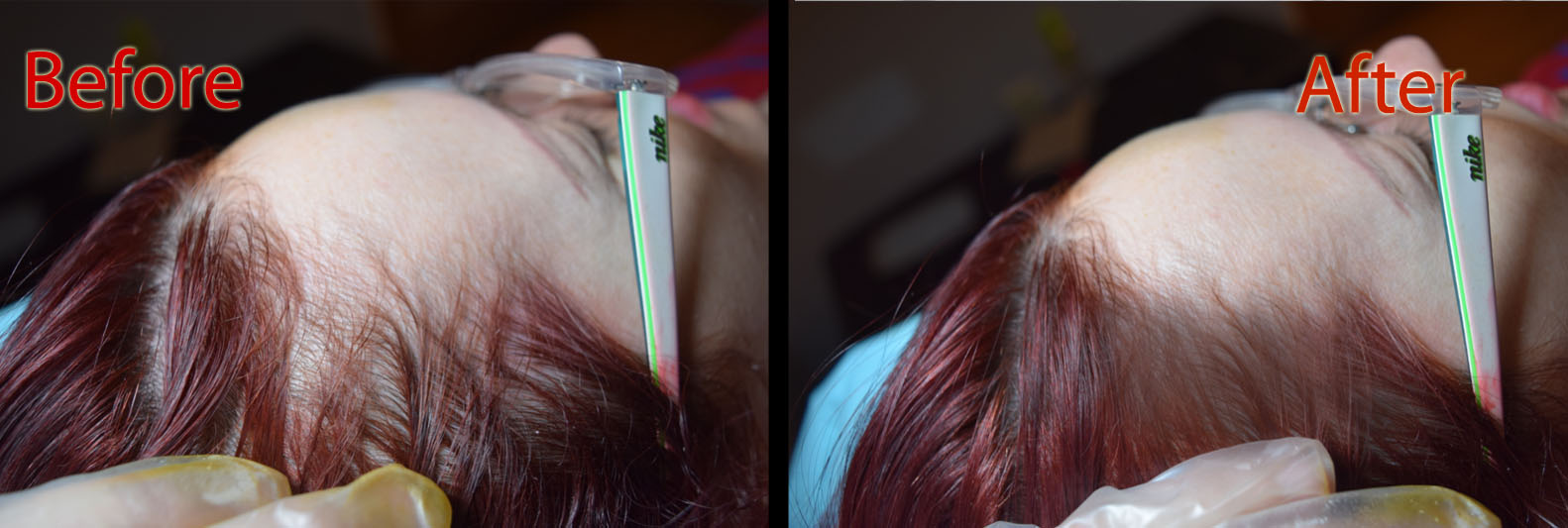Hair loss in women is widely common, affecting millions across the United States. When women start losing hair, it is no less than traumatic. Even worse, the mental trauma of thinning hair or bald patches is intense as they continue to keep it private. Some of the causes of hair loss range from genetics and hormonal changes to medical conditions and styling habits.
Two forms in particular—frontal fibrosing alopecia and traction alopecia—are widely common among women. The conditions can be emotionally devastating. Luckily, SMP for female hair loss is a solution to camouflage the problem.
Female Hair Loss Types
Frontal fibrosing alopecia (FFA)
FFA is a type of scarring alopecia where the hairline gradually recedes, often along the front and sides of the scalp. It is believed to be linked to autoimmune reactions and hormonal changes, commonly affecting post-menopausal women. Once follicles are damaged by scarring, regrowth becomes nearly impossible. This makes early diagnosis and cosmetic solutions crucial for restoring a natural appearance.
Traction alopecia
Traction alopecia results from repeated tension on follicles. This includes tight hairstyles like braids, ponytails, or extensions. Over time, this tension weakens follicles and leads to permanent hair loss in the affected areas. While changing hair habits can prevent further loss, the damage that’s already done usually requires a cosmetic restoration method.
The Emotional Toll of Hair Loss in Women
Hair is often tied to identity, femininity, and self-esteem. For women, visible hair loss can lead to anxiety, withdrawal from social situations, and a loss of confidence in both personal and professional settings. When traditional treatments fail to deliver results, many women start searching for solutions that provide immediate and realistic improvement.
How SMP for Female Hair Loss Works?
SMP is a non-surgical treatment in which the scalp practitioner deposits tiny pigment dots on the scalp. For thinning hair, it creates the illusion of density and reduces the contrast between the scalp and hair color.
For women with FFA or traction alopecia, SMP can recreate a natural-looking hairline and fill in bare patches where hair will not regrow. Results are visible immediately, and the procedure requires minimal downtime.
Why SMP Stands Out From Other Solutions?
Hair transplants are not always suitable for women, especially in cases of diffuse thinning or scarring alopecia. Topical treatments and supplements may slow shedding but rarely reverse advanced loss.
Wigs and hairpieces can be effective but require ongoing maintenance and may feel uncomfortable. SMP offers a unique combination of speed, realism, and long-lasting results without surgery or daily upkeep.
When Other Remedies Don’t Work
Many women try natural remedies such as scalp massages, herbal oils, or dietary supplements, but these often show limited success once follicles are permanently damaged. SMP for female hair loss provides a guaranteed visual improvement, making it one of the most reliable cosmetic options available.
Choosing the Right SMP Artist
With the growing demand for SMP, there is an influx of unqualified providers—often tattoo artists who claim to offer the service. However, SMP requires specialized pigments, equipment, and techniques that differ from tattooing.
A poorly done procedure can result in unnatural hairlines or pigment discoloration. Always choose a certified SMP specialist with a portfolio of results for female clients.
SMP for female hair loss is more than a cosmetic fix—it’s a way to restore confidence and regain control over your appearance. In 2025, women no longer have to accept hair loss as permanent. The right Arizona SMP artist can help you move forward with a natural look that lasts for years.
Top scalp micropigmentation Arizona practitioners are available at DermiMatch Clinic. Schedule a consultation now!

